In our labs
Thermo IS50 Advanced FTIR with Custom Polarization Modulation Attachment
This instrument is a workhorse of the group, providing high resolution infrared spectra of our chemical systems via several acquisition geometries. The polarization modulated technique is particularly useful in detecting ultra-thin films (ca. 1 to 1000 nm) and providing molecular level details on structure and orientation.
Bruker Vertex 70 FTIR
Bruker Vertex 70 FTIR equipped with MIR source, KBr beamsplitter, KBr sample compartment windows, and DLaTGS detector.
Optical range: 8000 - 350 cm-1
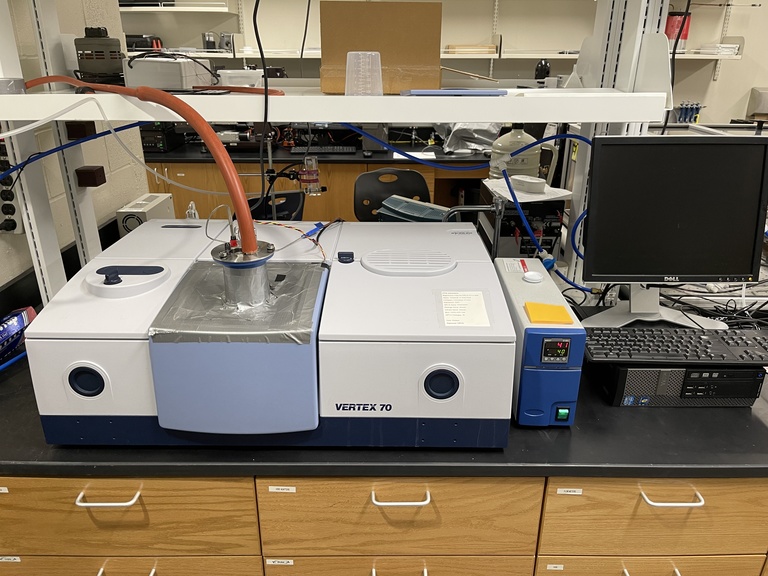
Raman Spectometer
- Spectra Physics 532 nm, 300 mW Excelsior laser
- J.Y. Horiba iHR320 imagine spectrometer
- Andor Newton CCD Detector
Our Raman spectroscopy system is a custom build, with the best components selected from multiple specialized vendors. It is designed for maximum flexibility and can acquire Raman scattered photons from bulk samples, thin film coatings, environmental substrates, or bulky 'real-world' objects.
|
|
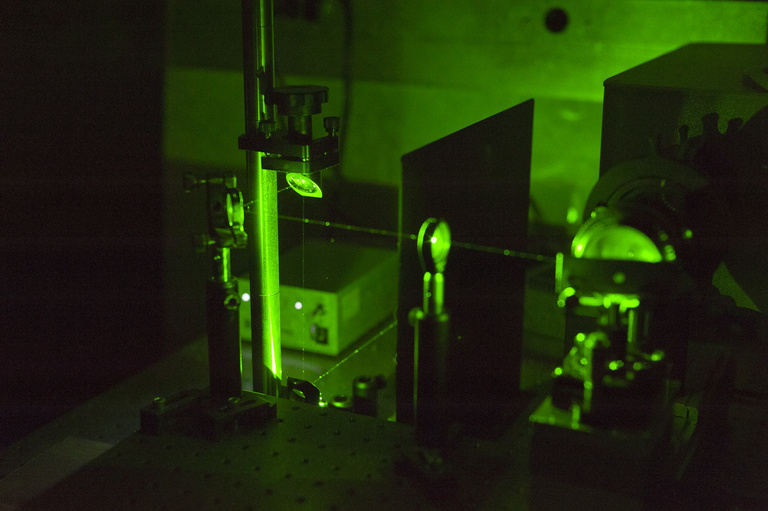
|
CH Instruments Electrochemistry Kit
We have two instruments from CHI: these are a 660-D electrochemical analyzer and an 1100-B electrochemical workstation. Both of these systems are used to characterize, and sometimes to create, the chemical system in our research. The 660-D is truly an all-in-one potentiostat with extensive capabilities from standard cyclic voltammetry all the way to impedance vs. potential scanning. The 1100-B is used for screening analysis and to provide electrochemical control for experiments that combine spectroscopy with a defined current or applied electrochemical voltage. For a full list of their capabilities, please click on the following links:
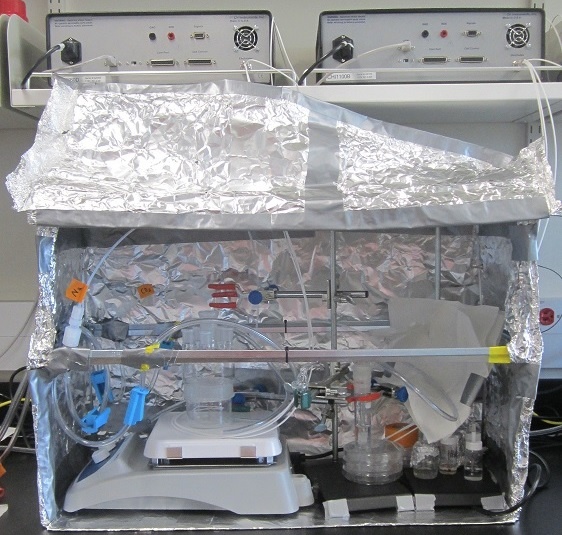
Altos Photonics Vibrational Sum Frequency Generation (vSFG) Spectrometer
The vSFG system features a picosecond, diode-pumped laser at 1064 nm fundamental and an optical parametric generator to create tunable (2.3 to 10 µm) infrared light. The optical layout allows selection of polarization angles for all incident and collected beams, as well as direct conversion between vSFG and SHG measurements. A custom sample stage allows collection from samples in both vertical and horizontal sample planes, supporting dynamic wetting and vapor/liquid interface studies.
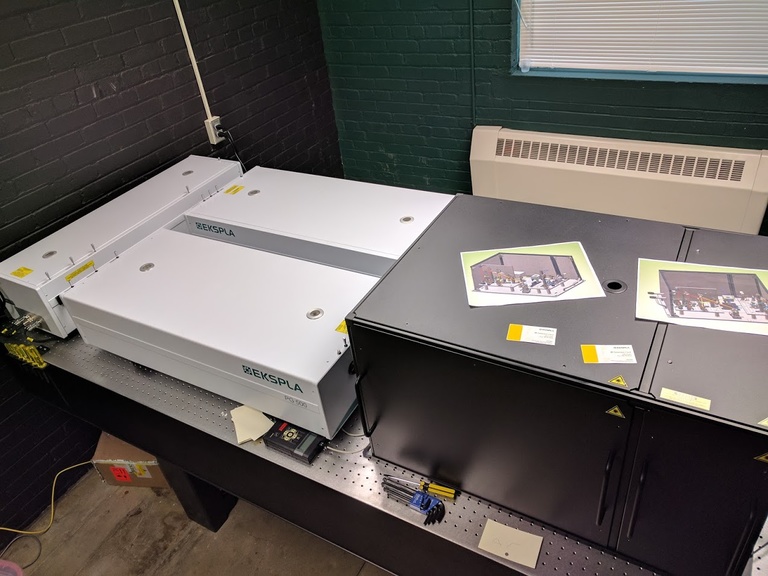
|
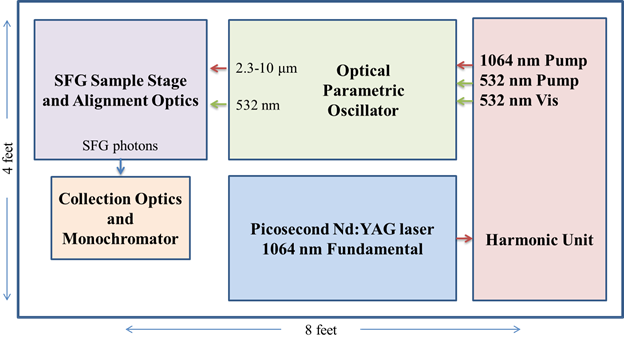
|
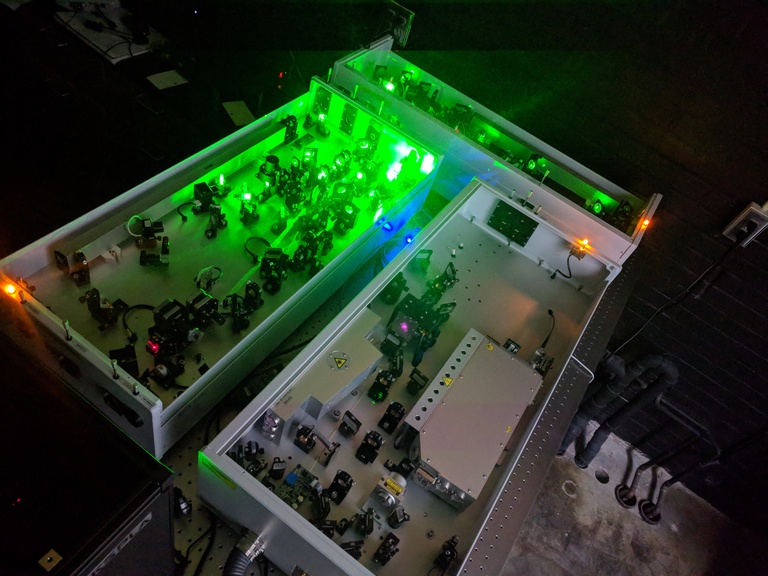
|
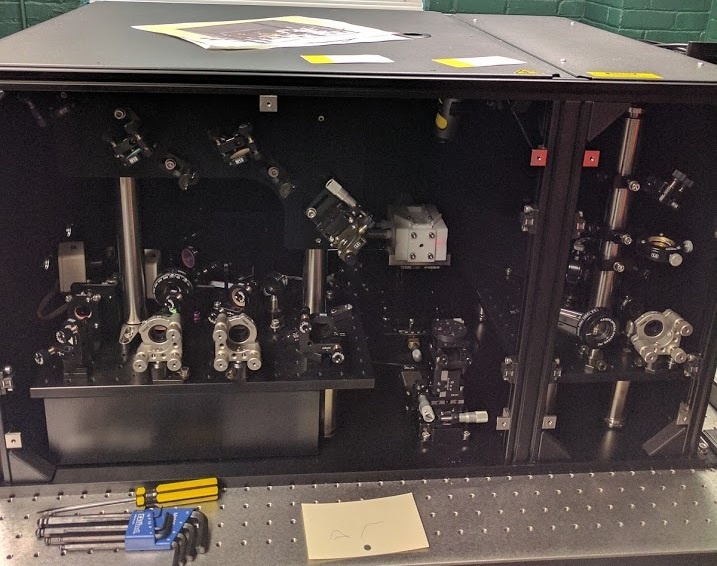
|
J.A. Woollam M-2000V Spectroscopic Ellipsometer
This research grade ellipsometer from J.A. Woollam is specially designed to accommodate the vertical sample position required for some work done in our lab. It is a key technique we use to confirm the thickness of films or oxide layers on our substrates, as well as to measure refractive index and other optical contacts of the materials we use in all of our active research areas.
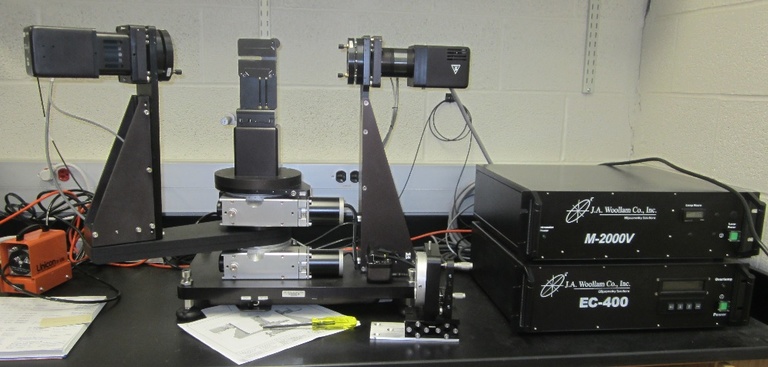
Contact Angle Goniometer
The Thorlabs research grade scientific camera combines with the Eppendorf electronic dispensing system to create a system capable of capturing high resolution images of liquids coming into contact with a surface, providing a characterization of the wettability of a surface via contact angle measurement.
|
|
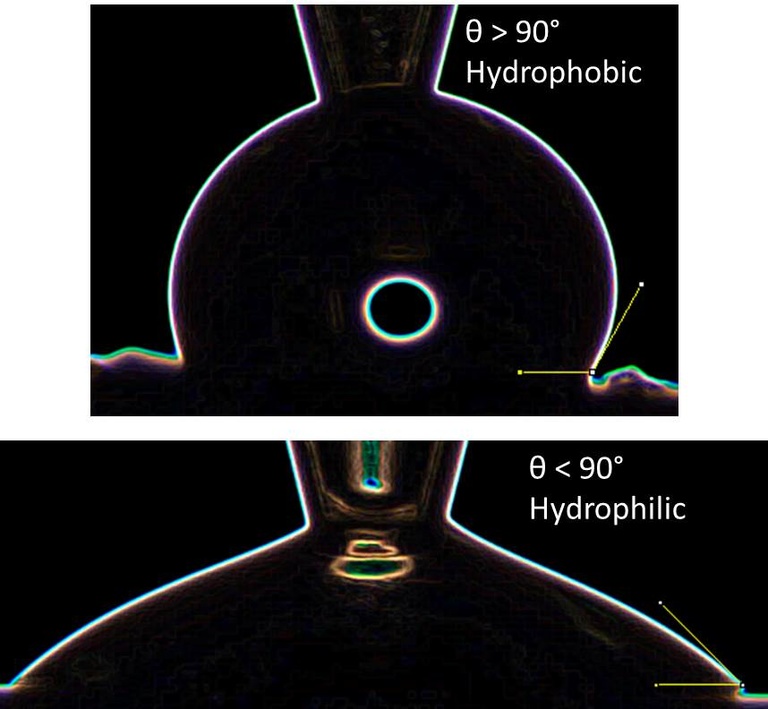
|
Varian 3900 Gas Chromatographs
Our GC can be used to reliably separate and analyze compounds that can be vaporized without decomposition. These instruments are equipped with a thermal conductivity detector (TCD) which is a ‘universal’ detector that can respond to all compounds excluding the carrier gas. Fitted with either a Mol Sieve 5A PLOT or Carboxen PLOT capillary GC column, we can separate and quantify hydrogen, carbon monoxide, carbon dioxide, methane and most C1 and C2 light hydrocarbon molecules. That makes this instrument an invaluable tool to detect and analyze products from our carbon dioxide reduction in ionic liquids projects. Given the very low detection limit of 5 ppm for most analytes it can be used for both headspace and bulk solution analysis of volatile compounds.
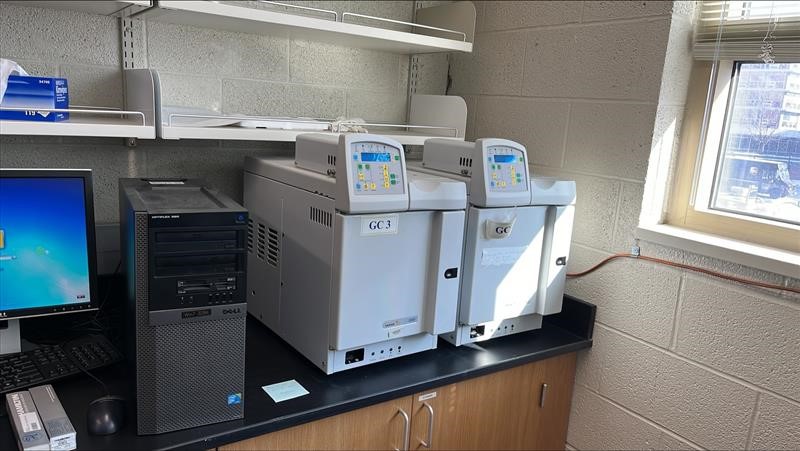
Brookfield DV2T-LV Viscometer with TC-550 Temperature Control Circulating Bath
Our viscometer is fitted with an LV internal spring capable of measuring low viscosity materials and thin fluid films (range: 1 cP to 6M cP). This allows us to characterize the dynamics of ionic liquids and other fluids (see Research tab) under controlled temperatures and tie the rheological properties to other parameters of interest, such as film thickness and capacitance.
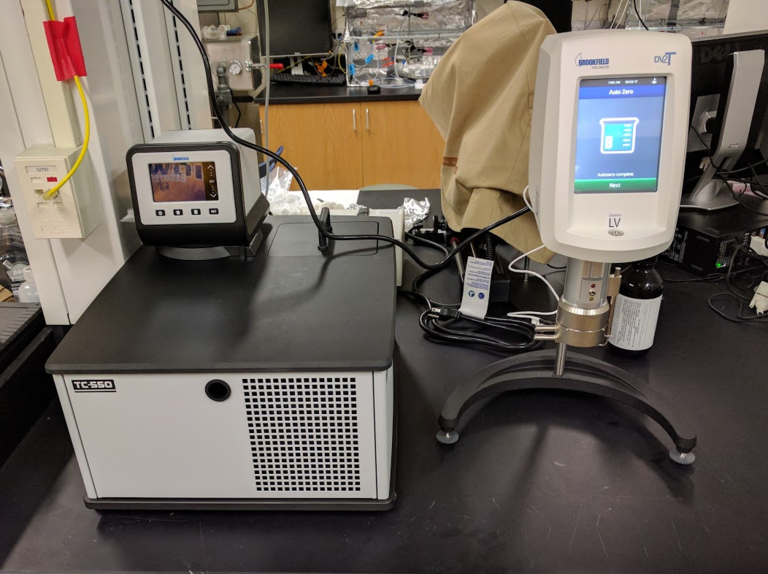
Stanford Research Systems QCM200
This SRS quartz crystal microbalance (QCM) measures mass and viscosity of fluids or gels that exist near surfaces and within thin films. The instrument reads the resonant frequency of a quartz crystal, which changes as a linear function of the mass of material deposited on the crystal surface (via the Sauerbrey equation). This QCM can resolve mass changes at the sub-nanogram level, enabling analysis of (sub)monolayer films. Additional applications include observations of phase transitions, swelling, and cross-linking. A flow cell attachment enables liquid and gas phase analyses to probe a variety of chemical systems.
VAC Genesis Glovebox
Our glovebox provides an inert nitrogen atmosphere using independent purifiers to control oxygen and water at the ppm level, facilitating experiments that would otherwise be very sensitive to oxidation and ambient moisture.
Instrumentation facilities and other research groups at UIowa
TA Instruments Q100 Differential Scanning Calorimeter (Dept. of Chemistry, UIowa)
TA Instruments Q100 DSC equipped with Liquid Nitrogen Cooling System and 50 sample capacity autosampler
This sensitive technique allows us to monitor heat flow as a function of time and temperature which allows us to monitor crystallization pathways and heat capacities.
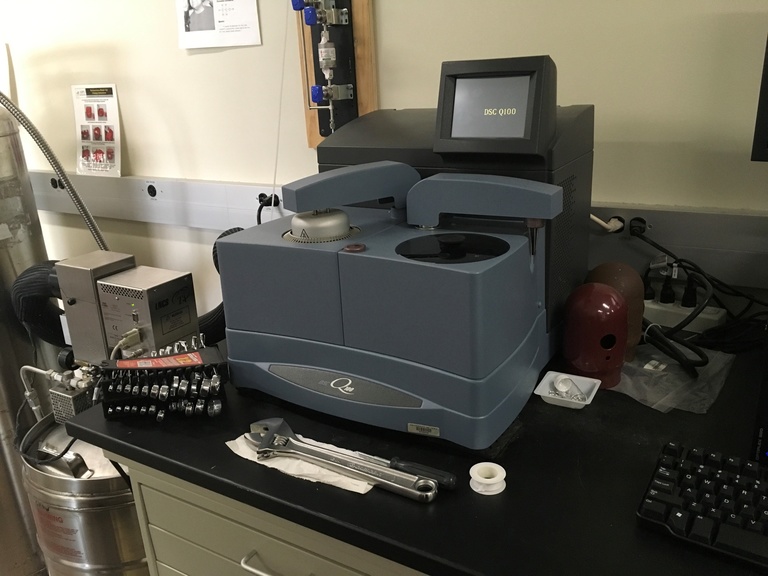
Asylum Research MFP-3D Atomic Force Microscope (Dept. of Chemistry, UIowa)
This instrument provides nanometer resolution topography images of our substrates and films.
|
|
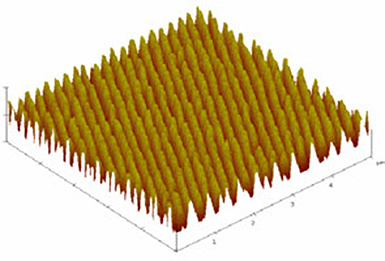
|
Angstrom Engineering Amod Electron Beam Evaporator (Microfabrication Facility - Optical Science and Technology Center, UIowa)
This OSTC instrument, housed in the Iowa Advanced Technology Laboratory of the University of Iowa, is a versatile thin film deposition tool. We utilize this instrument to prepare substrates for a variety of research applications.
|
|
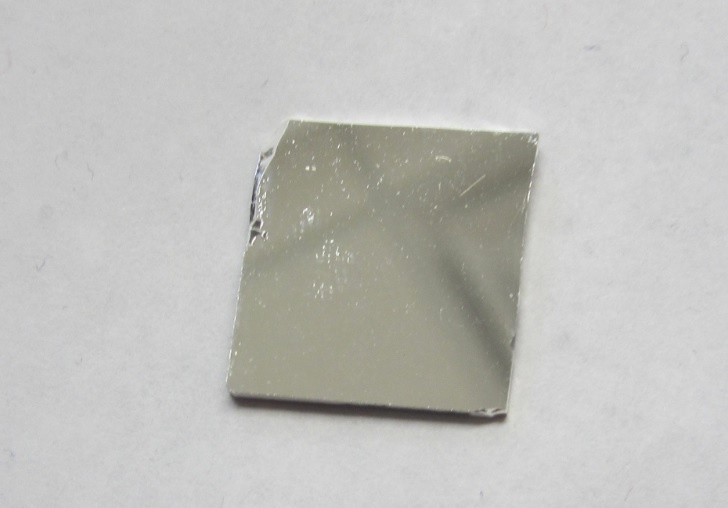
|
Mass Spectrometry Facility (Dept. of Chemistry, UIowa)
The High Resolution Mass Spectrometry (HRMS) Facility can provide researchers with molecular weight and structural information on a variety of compounds. The instrumentation in the facility consists of a Micromass Autospec, which is a high resolution mass spectrometer (MS); a ThermoFinnigan Voyager, which is a single quadrupole MS; and a ThermoFinnigan LCQ, which is a quadrupole ion trap MS. On-campus researchers have the opportunity to analyze their own samples on the Voyager MS after participating in a short training session.
We have the following services available:
- Nominal mass ESI-MS
- Accurate mass measurements or HR-MS
- GC-MS
- Solids Probe-MS for thermally unstable and organometallic compounds
- LC-MS
- Tandem MS or MS-MS for structure elucidation
More information regarding this facility can be found here: https://hrmsf.research.uiowa.edu/
NMR Facility (Dept. of Chemistry, UIowa)
We are fortunate to have an NMR Facility within the Chemistry building with almost a dozen low-field, high-field, and solid state spectrometers capable of conducting a wide variety of experiements. Students are able to conduct their own NMR experiments (after training) or with the help of two full time NMR Facility staff members.
More information about the NMR Faciltiy can be found here: https://chem.uiowa.edu/university-iowa-central-nmr-facility
The Materials Analyis, Testing, and Fabrication (MATFab) Facility (UIowa)
The MATFab is located right next door in the Iowa Adavanced Technology Laboratories building.
https://matfab.research.uiowa.edu/